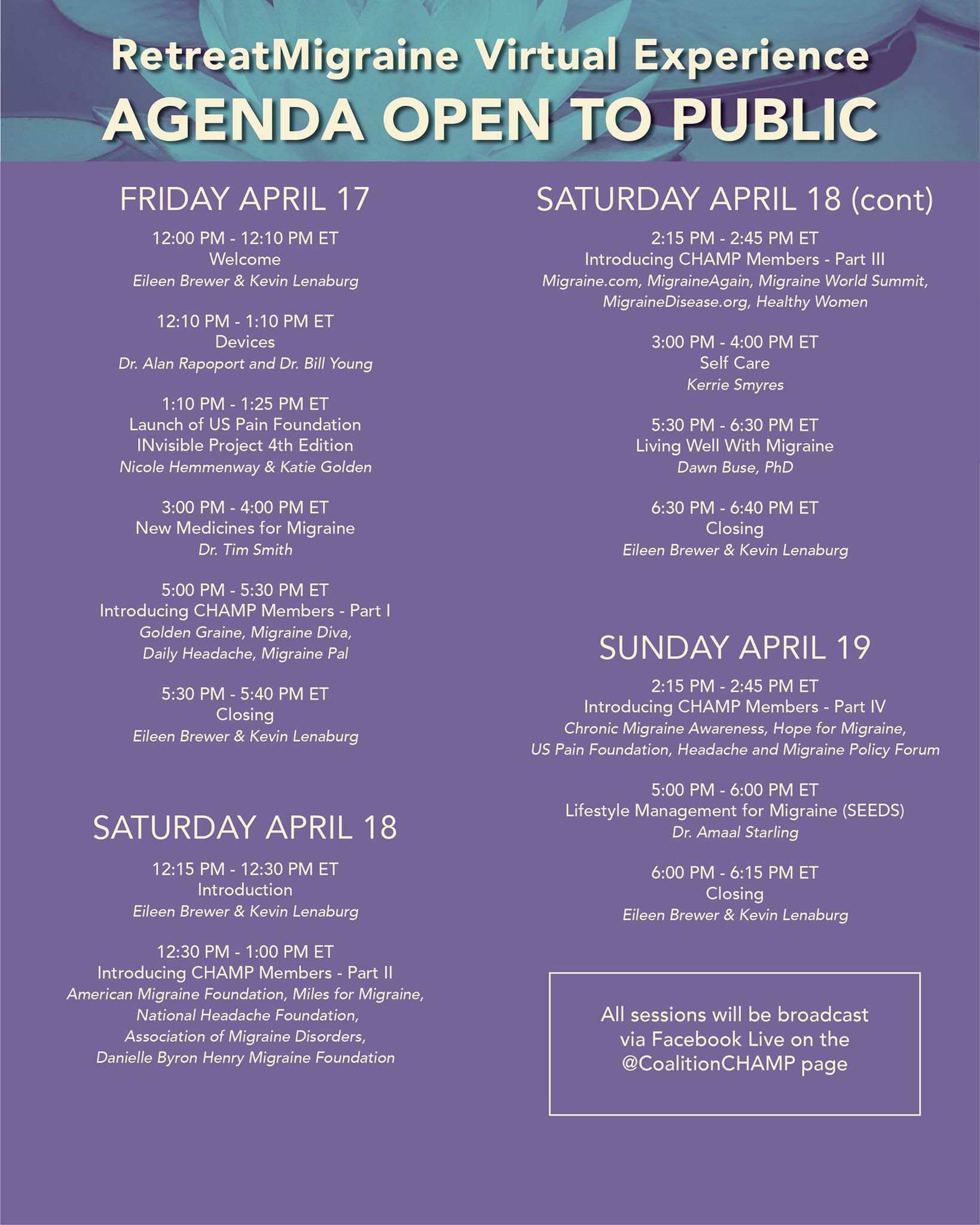Imagine reducing the severity of your migraine symptoms and/or the intensity of your distress during a migraine attack without medication. Now imagine learning the skills to do so in a free course that you can take from the comfort of your own home.
The Resources for Migraine Management course, offered by the Danielle Byron Henry Migraine Foundation, can help you do exactly that. The free e-course begins this Saturday, January 16. (Registration link: Resources for Migraine Management virtual course registration)
What the Course Teaches
A 10-session online course, Resources for Migraine Management teaches a variety of biobehavioral treatments for migraine management. Each session will teach different methods for managing migraine symptoms and the associated stress and anxiety.
The goals of the program are to:
- Teach relaxation techniques
- Teach pain management strategies
- Learn how to better cope with distressing thoughts and emotions
- Build resources for greater resilience
About the Teacher
Dan Kaufman, PhD, a research assistant professor in neurology at the University of Utah School of Medicine, teaches the course. A scientist might seem an unusual choice to teach the course, but the story of how he got here is persuasive. In his scientific research on migraine, Dr. Kaufman became curious about the experience of people living with the condition. As he spoke with people to learn about their perspectives, he was compelled to offer help that was more direct than scientific research. He began training in biobehavioral therapies for migraine, which led to him opening a private practice to teach these therapies and, ultimately, to offer this course.
Firsthand Experiences
One woman who participated in last year’s class recently reported that, for the first time in years, she has been migraine-free for months and that her anxiety is virtually gone. While these results aren’t typical, it’s a stunning example of the potential effectiveness of biobehavioral techniques.
While I didn’t take this particular course, I have learned many of these techniques over the years. After the events of 2020 stirred up my stress-triggered migraine attacks, these methods helped me return to my migraine baseline and cope more effectively. They have also been invaluable in teaching me to cope with the onslaught of migraine. Living with chronic migraine is still hard and frustrating, but it is so much easier than before I had these strategies.
Course Logistics
The next class begins on Saturday, January 16. Sessions are on Zoom on the second and fourth Saturday of each month from 1 to 3 p.m. MST. Each one teaches you new skills that build on previous sessions. Classes include opportunities to practice the techniques and get feedback from the instructor, so attendance at the scheduled times is preferred. However, if you’re unable to attend a session live, recorded sessions will available so you can catch up.
Registration
Here’s the link to register: Resources for Migraine Management virtual course registration.


